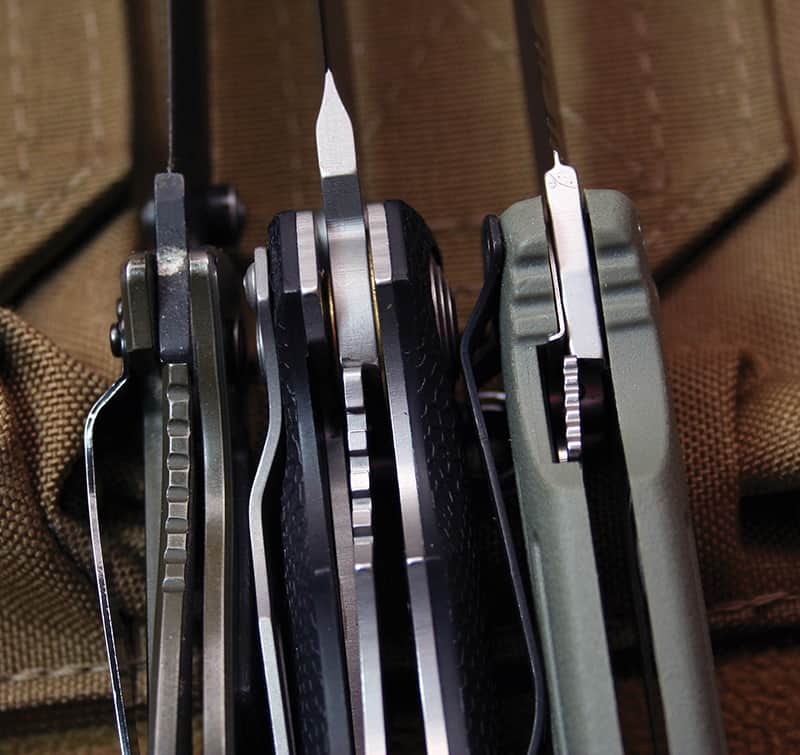Size, Steel, Style
I’m a sucker for big knives, but I’ve found that folders over about 5 inches long closed, with blades over 3.75 inches and 5.5 ounces weight are the ones you may like, but you won’t carry. They “bottom out” in short pockets, jam into you when sitting or squatting, or they’re too heavy for comfort.
I carry my folder clipped inside the right front pocket, with the tip down and blade forward. That way it draws naturally into my hand, and when it’s inside the pocket I can simply reach down, place my thumb on the fabric over the blade’s spine and my index finger on the knife’s back, assuring me it’s closed and secure. If it came open, it would cut away from me. Whether you decide to carry tip up, tip down, blade forward or to the rear, make sure the pocket clip will accommodate that choice. I’ve had to pass on some fine knives because they couldn’t be carried tip-down, blade-forward.
There’s such an array of fine knife steels in use that if you buy a reputable brand folder and avoid blades labeled “surgical steel” or just “stainless”—both virtually meaningless terms—you’ll probably be well served. Just be aware that harder tool steels like D-2 hold an edge beautifully, but can be a pain to sharpen too. A little study is recommended.
For a general-duty EDC, plain and simple spear points or drop points are most useful. Unless you have a specific need for radically curved or fully serrated blades, they limit your folder’s utility.
Oh, there’s a lot more, but we’re out of space. If this helps you make one wise choice rather than fill a drawer with disappointments, great!
Connor OUT




